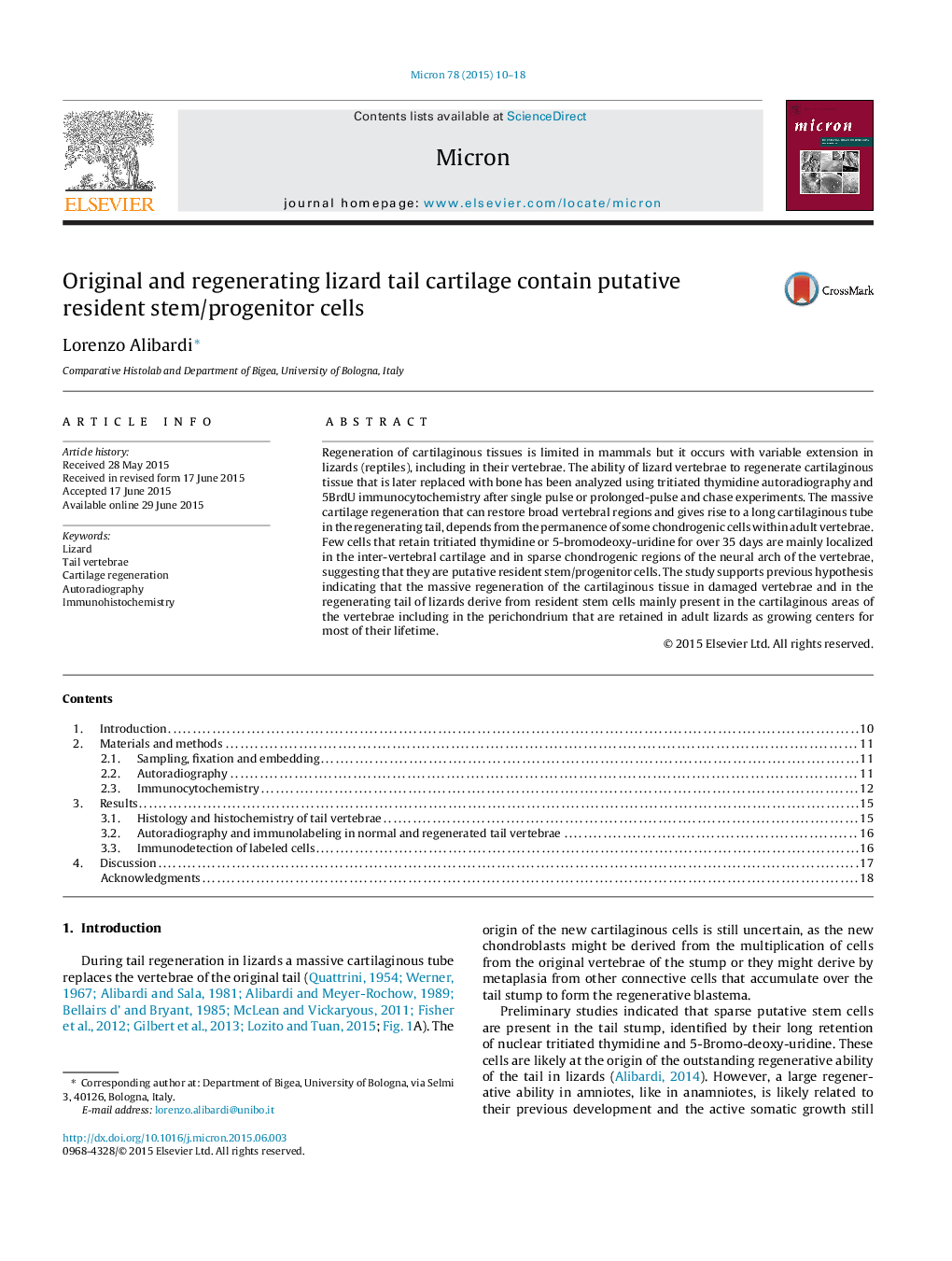| Article ID | Journal | Published Year | Pages | File Type |
|---|---|---|---|---|
| 1588804 | Micron | 2015 | 9 Pages |
Abstract
Regeneration of cartilaginous tissues is limited in mammals but it occurs with variable extension in lizards (reptiles), including in their vertebrae. The ability of lizard vertebrae to regenerate cartilaginous tissue that is later replaced with bone has been analyzed using tritiated thymidine autoradiography and 5BrdU immunocytochemistry after single pulse or prolonged-pulse and chase experiments. The massive cartilage regeneration that can restore broad vertebral regions and gives rise to a long cartilaginous tube in the regenerating tail, depends from the permanence of some chondrogenic cells within adult vertebrae. Few cells that retain tritiated thymidine or 5-bromodeoxy-uridine for over 35 days are mainly localized in the inter-vertebral cartilage and in sparse chondrogenic regions of the neural arch of the vertebrae, suggesting that they are putative resident stem/progenitor cells. The study supports previous hypothesis indicating that the massive regeneration of the cartilaginous tissue in damaged vertebrae and in the regenerating tail of lizards derive from resident stem cells mainly present in the cartilaginous areas of the vertebrae including in the perichondrium that are retained in adult lizards as growing centers for most of their lifetime.
Related Topics
Physical Sciences and Engineering
Materials Science
Materials Science (General)
Authors
Lorenzo Alibardi,
